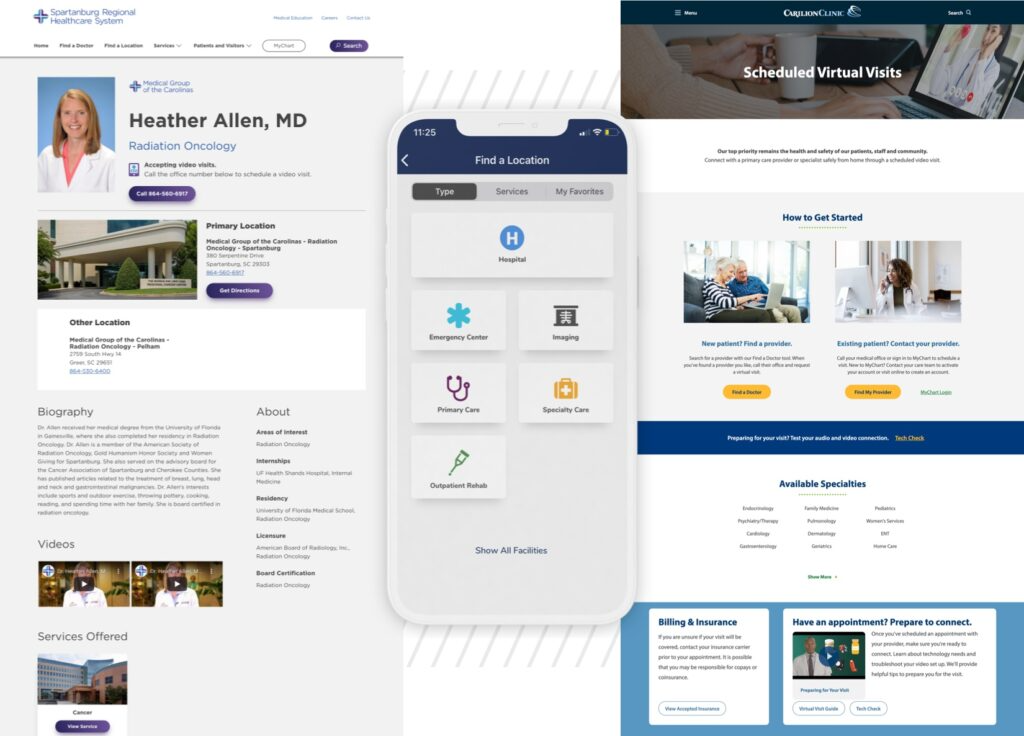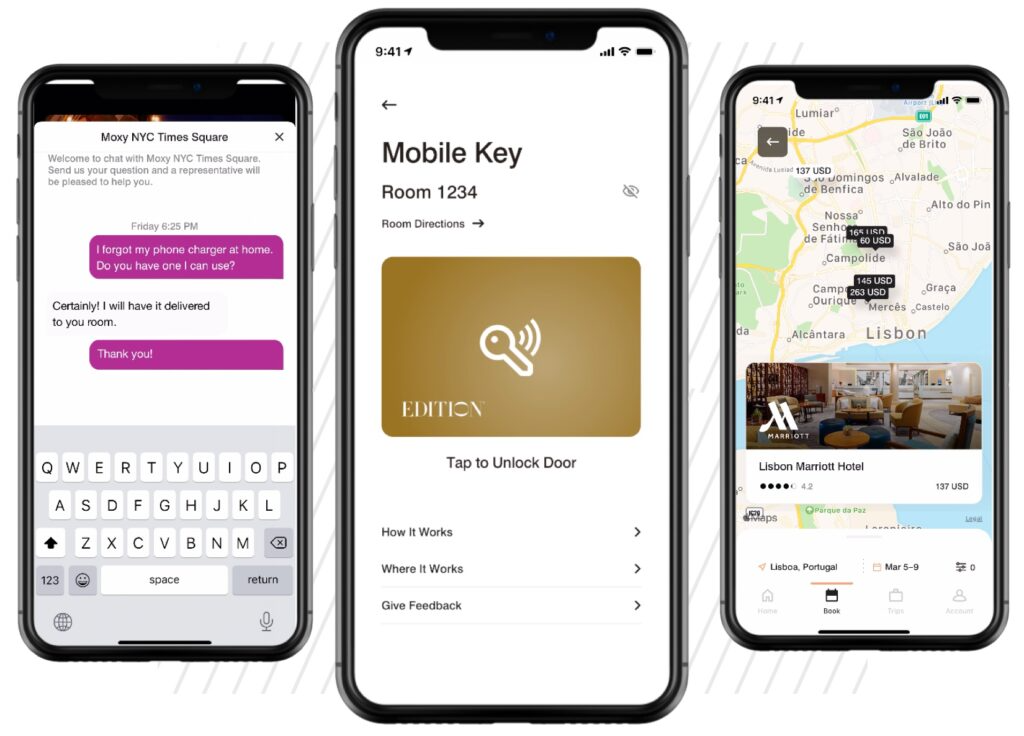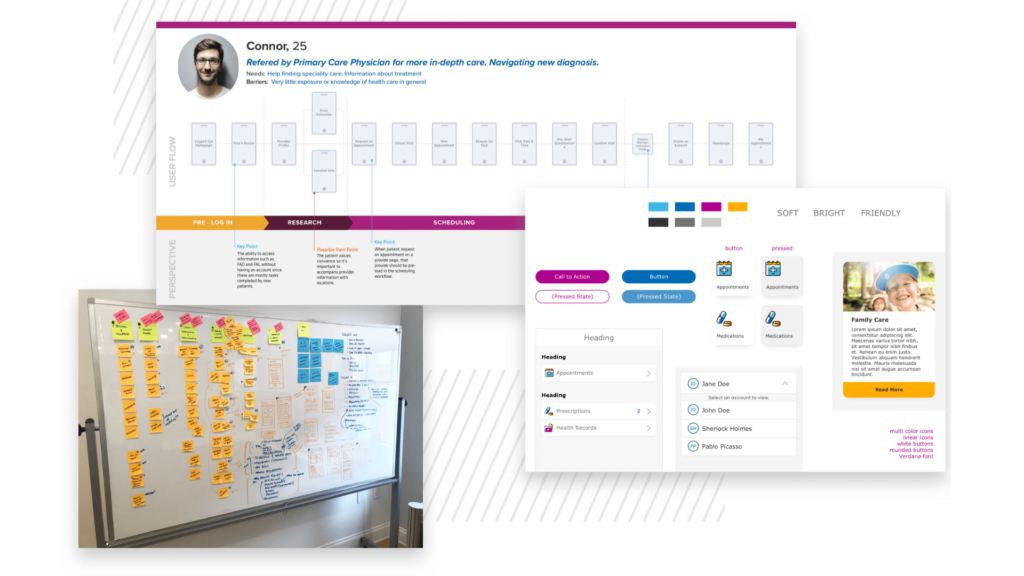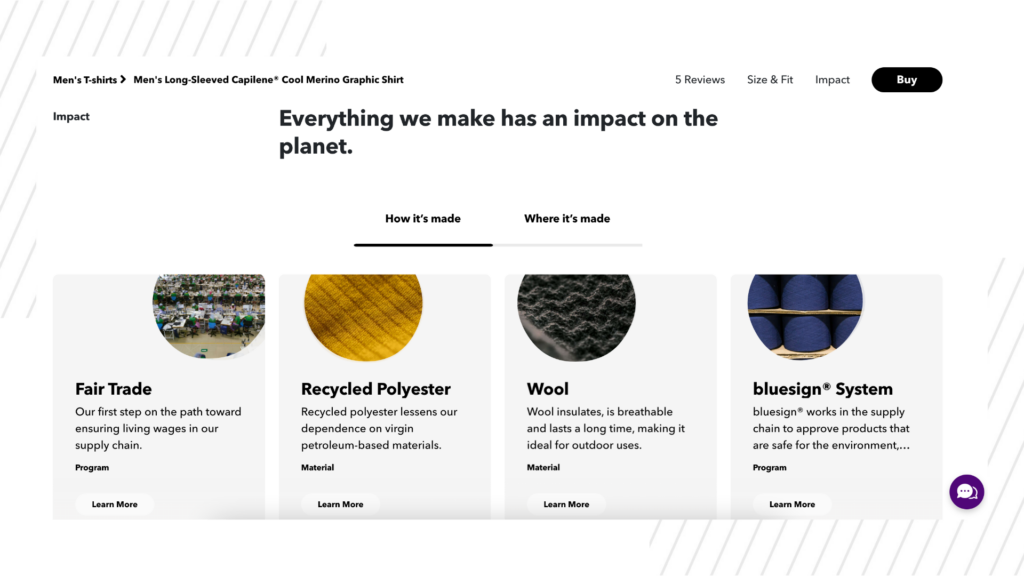Although the buzzword “digital front door” has been used in healthcare circles since 2017, the concept itself is by no means “new” and is actually the reason why Modea exists.
In this article, we will explain what a digital front door is, why it’s crucial for the future success of your healthcare organization, and 3 principles to get your team started.
Over the years, we’ve seen retail giants pave the way for what user experience should look and feel like. As retail stores shrink, e-commerce grows, and competition is at an all-time high, these large companies are now forced to craft and launch award-winning, omnichannel experiences for consumers with a goal of allowing the user to seamlessly engage with the brand through connected experiences.
Healthcare should be no different. And good news, we’ve seen a huge shift in how healthcare providers are prioritizing digital investments over the past few years.
These investments are providing impactful forward movement, however, much of this work in healthcare is siloed and can still create pain points for the consumer. If healthcare providers are going to win more customers in today’s digital landscape, they will need to stop seeing digital as a collection of features, and start seeing it as the way to build a better and more connected customer experience.
“Digital front door” is a strategy that guides healthcare providers to do just this.
“Digital front door is a strategy that leverages the use of technology to create a better and more connected customer experience.”
Often, a digitally connected customer experience in healthcare will include tools such as:

To be clear, this strategy is not about spinning up new and confusing technologies for your patients based solely on what your leaders think they need. Rather it’s taking the time to truly understand what your customers need most and taking the steps to meet those needs. Remember, you should be making it easier to interact with your brand on a daily basis across platforms. If that means creating something new, that’s great, and having the right plan and roadmap is the next critical step you would need to take.
It’s simple… if your healthcare organization doesn’t provide an easy-to-use omnichannel experience, from initial appointment scheduling through the final bill, your patients might go elsewhere, even if the care isn’t as good. It’s never been easier for a consumer to get vaccinated at a local Walmart Health location, order prescriptions through Lemonaid, or meet virtually with a primary care physician through Amazon Care. If you don’t invest in the future of your healthcare system now and use your connected digital experiences as a differentiator, not only will your regional competition take away your customers, but so will disruptive new entrants.
So, how should your healthcare system get started? Our team suggests following these 3 simple principles in order to create a strong digital front door.
Every healthcare system has a lot of data, whether or not they are analyzing and consuming that data. A common issue is that data is inherently messy and often housed in silos, making it difficult to connect and use it to inform better personalization and digital optimization strategies.
Think about how your local grocery store uses your consumer data to provide relevant and timely coupons based on previous purchases.
Healthcare should be no different.
If a customer receives a CRM-generated email and clicks through to a website or landing page, the health system could already know what the patient’s recent searches are, what appointments they’ve had, which vaccinations they’ve recently received (or not), etc. If this type of customer data is being joined and consumed, then the customer can view a much richer and more personalized experience.
If your healthcare system is not doing this yet, answering these questions can help your team understand where to start.
Today you can book a room through Marriott’s mobile app in ways you never could before. When you walk into Marriott’s hotel the mobile app will prompt you to digitally check-in. After doing so, you’re able to use your phone as a digital key to get into your room and enjoy your stay – all without having to interact with a single person or wait in long lines. The experience is simple, easy to use, and leaves you happy. You are able to engage with the brand in the manner that is most comfortable for you all while having a unified, on-brand experience throughout each touchpoint.
This example from the travel industry provides great inspiration on how a digital front door strategy can help a healthcare organization infuse digital tools into its customer experience to provide frictionless access and thoughtful touchpoints. Once again, the goal is to ensure that your organization creates experiences that make your customers’ lives easier and more convenient.

For healthcare, this could start with having a patient book an appointment online. When the patient arrives at the physical building the healthcare system’s mobile app sends a notification to check-in at the kiosk near the front desk. The patient does so and is then prompted to sit and wait to be called by the physician. This would provide an experience that minimizes friction and maximizes convenience.
The problem is that historically healthcare has not been at the forefront of creating these beautiful, seamless experiences (and is pretty far behind many other industries). We’ve seen healthcare systems spin up mobile apps without a purposeful strategy time and time again. The reasoning, more often than not is, “but our competitors have a mobile app”.
This thought of “but they have it” is dangerous. Yes, your organization should be focused on digitizing healthcare but it is critical to do so with purpose. Otherwise, it’s easy to fall into the trap of creating and building a bunch of stuff that’s not integrated into your brand’s experience at large. This can even cause more frustration and confusion for your customers.
We suggest starting with a customer journey mapping exercise to find clarity on what’s most important. A customer journey map is an in-depth and detailed process that will show you and your organization how consumers are interacting with your brand. It will identify gaps and opportunities and ultimately give you a holistic view of what your organization needs to know to deliver the best experience to your customers.

With each touchpoint, your customer needs to know that the continuous experience is that of your brand. If they download an app and the messaging, imagery, etc. is not consistent with your brand, mission, and values, you’ll be missing the opportunity to create meaningful brand loyalty.
This suggestion may seem obvious, however, it’s essential to the success of your customer experience. All touchpoints need to have consistent messaging across the board. Whether that’s your mobile app, website, paid advertising, a kiosk, print mailers, etc. Moreso, your digital tools should reflect what makes you special as an organization.
Patagonia is the ideal example of this. The company’s mission statement is “we’re in business to save our home planet.” which is blatantly obvious to see, feel, hear whenever a consumer engages with their online content, sees an ad (famously known for their “Don’t Buy This Jacket” campaign), or buys clothing from a retailer. Even their product pages reinforce that as a brand, Patagonia isn’t just trying to sell you stuff.

Tip: Your team and organization at large should have a voice, brand kit, etc. that will help guide consistency across all platforms.
In summary, the time is now. Get started on strategically improving every touchpoint along your customer experience. If you don’t, you could lose business to another hospital system, or one of the many non-traditional competitors out there who are now providing healthcare services.
If your team feels overwhelmed by the size of the initiative, start small. Complete a customer journey mapping exercise to learn more about your patients and what they need.
Interested in learning what your organization should be thinking about and planning for?
We’re here to help.
Contact us and we’ll set up a time to chat and share how our clients are connecting their patient experiences at large.
We help healthcare organizations identify the right digital strategies and create products that infuse control, transparency, and choice into the consumer healthcare experience.
In today’s ever-evolving healthcare landscape, data analytics has become an indispensable tool for driving improvements in patient care, operational efficiency, and cost management. ...read more
We live in a world of instant gratification that drives innovation and the adoption of new technology across healthcare. Consumers expect ease of use and zero lag time while accomplishing ...read more
Online tracking is nothing new. For years, companies have tracked users’ behavior using codes and scripts placed on a website or mobile app. The goal of online tracking has always ...read more
Mobile usage by consumers continues to increase. Their expectations to use healthcare apps and tools in the same ways they are accustomed to (think Facebook, Marriot, or ...read more